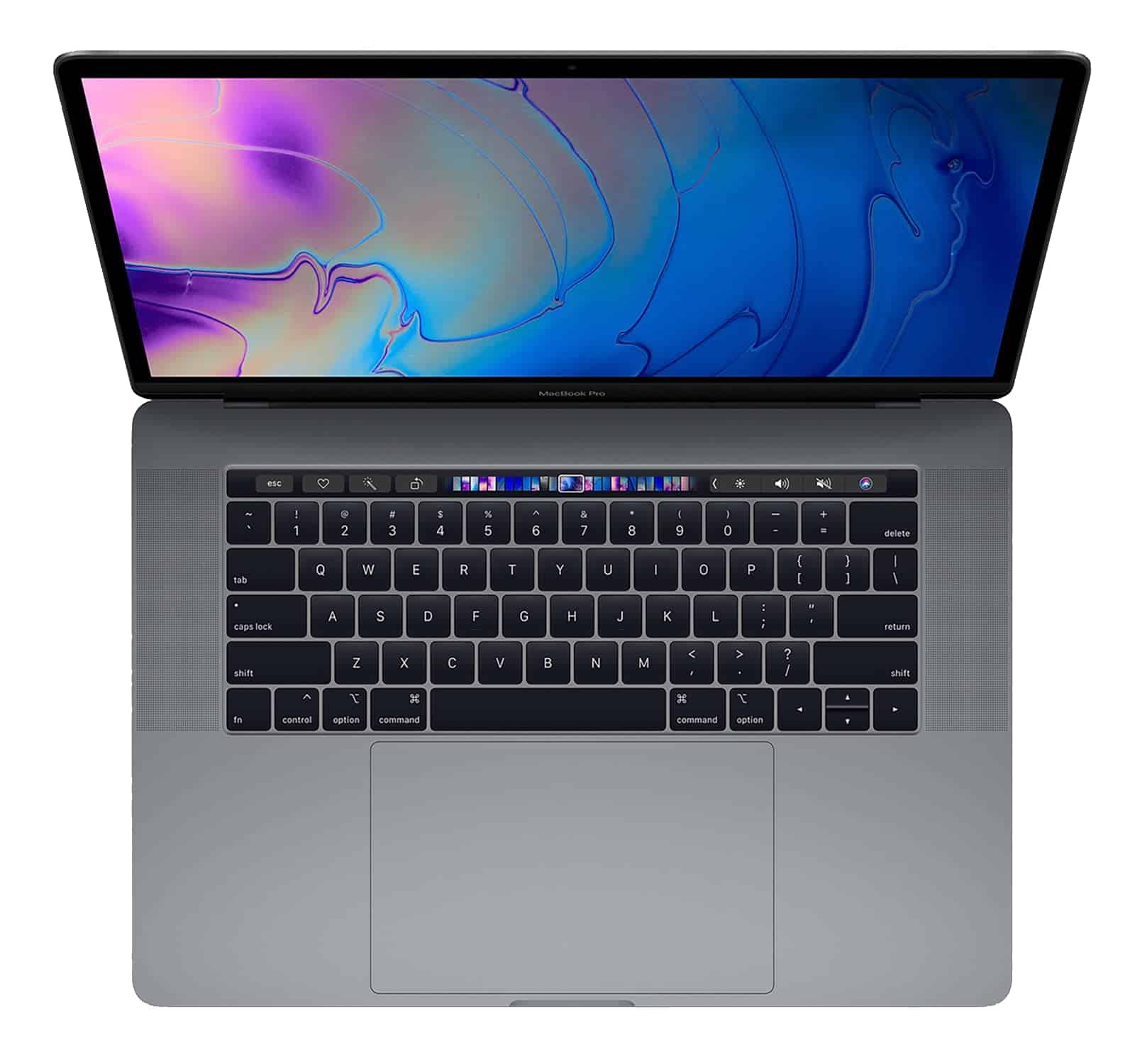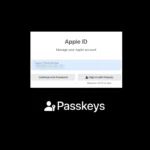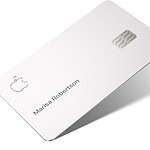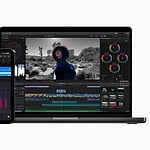Apple analyst Ming-Chi Kuo has thrown out a tantalizing prospect: a sub-$1,000 MacBook that swaps Apple’s familiar M-series silicon for the A18 Pro chip headed to this fall’s iPhone 16 Pro. Mass production is said to be penciled in for late 2025 or early 2026, with Apple reportedly planning 5–7 million units for the first full year of sales.
Rumored Hardware at a Glance
- Processor: A18 Pro (6-core CPU, up to 6-core GPU)
- Display: 13-inch class, edge-to-edge design similar to the current MacBook Air
- Colors: Silver, blue, pink, and yellow—mirroring the iPhone palette
- Battery life: Expected to surpass today’s M-series Air thanks to the A-chip’s ultra-low power draw
- Launch window: Retail debut could follow quickly after the late-2025 production ramp—think early-to-mid 2026
Performance: Closer to an M1 Than You’d Think
Early Geekbench numbers for the A18 Pro point to single-core scores around 3,400 and multi-core scores near 8,500—landing in the same neighborhood as the original M1 while edging out the newer M4 on single-threaded tasks. That means everyday workflows like Office, streaming, coding in VS Code, and even light photo work in Pixelmator Pro should feel snappy, all while sipping just a fraction of the power an M-series chip consumes.
Why an iPhone Chip Makes Strategic Sense
Apple has already been unifying iPadOS and macOS frameworks (think SwiftUI, Mac Catalyst, and Universal Control). Dropping a phone-class SoC into a MacBook:
- Reduces component cost: A-series wafers are fabricated at immense iPhone scale.
- Simplifies the logic board: Fewer external controllers are needed; RAM can be stacked on-package.
- Extends battery life: The A18 Pro is designed for a 3,300 mAh phone battery; give it a 50 Wh MacBook cell and all-day endurance becomes multi-day standby.
- Keeps thermals silent: Expect fan-less operation, resurrecting the no-fan 12-inch MacBook vibe of 2015—but this time with real performance headroom.
A Chromebook Killer for Education?
Chromebooks still dominate U.S. K-12, largely on price. An $799–$899 MacBook would finally break Apple’s sub-$1,000 barrier without the compromises of the aging M1 Air still sold at Walmart. Schools would get full macOS, on-device Swift playgrounds, and built-in MDM hooks—plus the App Store’s vast catalog of iPad titles recompiled for Apple Silicon.
Code Clues & Analyst Confidence
Strings labeled “Mac17,1” spotted in early macOS 15 builds map directly to an A18 Pro device class, lending weight to Kuo’s forecast. Kuo himself has a multiyear hit rate above 70 percent on Apple product timing, and similar predictions from other well-known sources arrived within hours of his post.
What the Community Is Saying
Reddit’s r/Apple crowd is broadly upbeat: one engineer points out that the A18 Pro “basically matches M1 GPU scores while burning 4–5× less power,” while others wonder whether Apple might throttle RAM to 8 GB to hit its price target.
Unanswered Questions
- Operating system: macOS is almost certain, but Apple could gate features like Pro apps behind M-series hardware.
- Memory & storage: Will Apple stick to 8 GB/256 GB or offer paid upgrades?
- Upgrades down the line: If A-series Macs take off, could we see an A19 Pro “MacBook SE” in 2027?
Apple hasn’t used A-series silicon in a Mac since the secret A12-powered dev kits of 2020—but if these reports hold, the company is betting that the iPhone’s brains can finally anchor a modern, mainstream laptop. And if the price undercuts today’s $999 Air, 2026 might be the year thousands of students—and plenty of budget-minded adults—buy their first Mac.
What To Do When MacBook Is Overheating
Is your MacBook running hot? You might notice your laptop feels warm, the fans are spinning loudly, or it’s slowing down during everyday tasks. When a MacBook overheats, it not only affects performance but can damage internal components over time. To cool down an overheating MacBook, first check for resource-heavy apps using Activity Monitor, ensure proper ventilation, clean the vents, update your software, and use your laptop on hard, flat surfaces.
MacBooks are designed to manage heat, but certain factors can push them beyond their limits. Using too many apps at once, blocked vents, or outdated software can all cause temperature spikes. Even environmental factors like using your laptop in direct sunlight or on soft surfaces like beds can trap heat and make the problem worse.
Fixing an overheating MacBook is usually simple. Most solutions take just minutes and don’t require technical knowledge. Taking quick action when you notice the first signs of overheating can prevent more serious problems and help your MacBook last longer.
Here are steps to take when your MacBook is overheating:
- Close Unnecessary Applications and Tabs:
- Quit any applications you’re not actively using.
- Close extra browser tabs, especially those running video or complex scripts.
- Check Activity Monitor (Applications > Utilities > Activity Monitor) to identify and quit any processes consuming a lot of CPU.
- Ensure Proper Ventilation:
- Move your MacBook off soft surfaces like blankets, pillows, or your lap, which can block the vents.
- Place it on a hard, flat surface (like a desk or table).
- Consider using a laptop stand to improve airflow around the device.
- Clean Vents and Fans:
- Dust and debris can accumulate in the vents and on the fans, restricting airflow.
- Gently use compressed air to clear out the vents. Be careful not to spray too close or too forcefully.
- Reduce Workload:
- If you’re doing intensive tasks like video editing, gaming, or running virtual machines, try to pause or reduce these activities.
- Lower display brightness.
- Check for Malware:
- Malware can run processes in the background that strain your CPU and cause overheating.
- Run a scan with reputable antivirus/anti-malware software.
- Update macOS:
- Apple often releases software updates that include performance improvements and bug fixes that can help with thermal management.
- Go to System Settings (or System Preferences) > General > Software Update to check for and install any available updates.
- Reset SMC (System Management Controller):
- The SMC controls various hardware functions, including fan management. Resetting it can sometimes resolve overheating issues.
- For MacBooks with T2 Security Chip (most models from 2018 onwards):
- Shut down your Mac.
- Press and hold the power button for 10 seconds.
- Release the power button.
- Wait a few seconds, then press the power button to turn on your Mac.
- For MacBooks without T2 Security Chip:
- With non-removable battery:
- Shut down your Mac.
- On the built-in keyboard, press and hold all of these keys: Shift (left side), Control (left side), Option (left side), and the power button simultaneously for 10 seconds.
- Release all keys.
- Press the power button to turn on your Mac.
- With removable battery:
- Shut down your Mac and remove the battery.
- Press and hold the power button for 5 seconds.
- Release the power button.
- Reinstall the battery.
- Press the power button to turn on your Mac.
- With non-removable battery:
- Consider Professional Help:
- If your MacBook continues to overheat despite these steps, there might be a hardware issue (e.g., failing fan, dried thermal paste). In this case, it’s best to contact Apple Support or take it to an authorized service provider.
Key Takeaways
- Check your Activity Monitor to find and close apps that are using too much CPU power and causing heat buildup.
- Keep your MacBook on hard, flat surfaces and clean the vents regularly to improve airflow.
- Update your macOS and apps to ensure they run efficiently and consume less power.
Understanding the Causes of MacBook Overheating
MacBooks can get hot for several reasons, from software issues to hardware problems. Knowing what causes overheating helps you fix it faster and protect your device from damage.
Overloading the CPU
Your MacBook’s processor heats up when it works too hard. Running too many apps at once forces the CPU to process more information, generating extra heat.
Web browsers with multiple tabs open can be major culprits. Chrome, in particular, is known as a resource hog that pushes your system to its limits.
Resource-intensive applications like video editing software, games, or virtual machines demand more processing power. These programs make your MacBook work harder and get hotter.
You can check which apps are causing problems by opening Activity Monitor. Look for programs using high CPU percentages and close the ones you don’t need.
Background processes sometimes run without your knowledge. Even when you’re not actively using many apps, hidden tasks might be overloading your system.
Poor Airflow and Dust Accumulation
MacBooks need proper airflow to stay cool. Using your laptop on soft surfaces like beds, pillows, or your lap can block air vents and trap heat inside.
Over time, dust builds up inside your MacBook. This dust layer acts as insulation, preventing heat from escaping through the vents.
Signs of dust problems:
- Fans running louder than normal
- Hot spots on the bottom of your device
- Decreased performance over time
MacBook Air models are especially prone to airflow issues due to their thin design. The compact body leaves less room for heat to dissipate.
Keeping your work area and laptop clean helps prevent these problems. A can of compressed air can safely remove dust from vents without opening the case.
Outdated Operating System
An outdated macOS often lacks important efficiency improvements. Apple regularly releases updates that optimize how your system uses resources.
Older operating systems may contain bugs that cause processes to run inefficiently. These inefficiencies make your CPU work harder than necessary, creating excess heat.
Software conflicts between apps and an outdated OS can trigger high CPU usage. When programs aren’t optimized for your version of macOS, they may demand more resources.
Security patches in updates often fix resource leaks. Without these fixes, background processes might consume more power than they should.
Always keep your MacBook updated to the latest compatible version of macOS. Updates are free and usually improve your laptop’s performance and thermal management.
Malware and Viruses
While less common on Macs than PCs, malware can still affect your MacBook. Malicious software often runs constantly in the background, using processor resources and generating heat.
Crypto-mining malware is particularly problematic. These programs use your computer to generate cryptocurrency, pushing your CPU to its limits 24/7.
Warning signs of malware:
- Unexpected CPU usage
- Battery draining faster than normal
- MacBook fan running at high speed even with few apps open
- System running hot during simple tasks
Browser extensions can sometimes contain malicious code. Extensions that promise to speed up your browsing or offer deals might actually be running unwanted processes.
Regular malware scans help keep your system clean. Use trusted security software designed for Macs to detect and remove unwanted programs.
Hardware Problems
Physical issues with your MacBook’s cooling system often cause overheating. Failing fans can’t move hot air away from components effectively.
Thermal paste between the CPU and heat sink dries out over time. When this happens, heat can’t transfer properly from the processor to the cooling system.
Battery issues sometimes contribute to overheating. As batteries age, they become less efficient and can generate more heat during charging and use.
Faulty heat sensors might not trigger fans when needed. If your MacBook isn’t detecting high temperatures correctly, it won’t cool itself properly.
MacBook Pro models with discrete graphics cards face additional heating challenges. These more powerful GPUs generate significant heat when processing graphics-intensive tasks.
Hardware problems usually require professional repair. Apple stores and authorized service providers can diagnose and fix these issues safely.
Monitoring Your MacBook’s Performance
Keeping track of your Mac’s performance is crucial when dealing with overheating issues. By monitoring system resources, you can quickly identify what’s causing your computer to run hot and take steps to fix it.
Using Activity Monitor
Activity Monitor is a powerful built-in tool that shows exactly what’s happening inside your Mac. To open it, go to Applications > Utilities > Activity Monitor, or simply search for it using Spotlight.
The tool displays five tabs: CPU, Memory, Energy, Disk, and Network. For overheating problems, focus on the CPU and Energy tabs. The CPU tab shows how hard your processor is working. If your Mac is overheating with loud fans, look for processes using high CPU percentages.
The Energy tab is especially helpful as it shows which apps are using the most power. Look at the “Energy Impact” column to spot power-hungry applications. Apps with high energy impact typically generate more heat.
You can sort each column by clicking on the column header. This makes it easy to see which processes are demanding the most resources.
Identifying Resource-Intensive Applications
Once Activity Monitor is open, you can quickly spot the applications causing your Mac to overheat. Check the CPU usage and look for any process using more than 70% consistently.
Common culprits for Mac overheating include:
- Web browsers with many open tabs
- Video editing software
- Photo editing programs
- Games
- Background processes or helper apps
To handle resource-intensive apps:
- Select the problematic app in Activity Monitor
- Click the “X” button in the toolbar to quit it
- Close windows or apps you’re not using
If you find an app that constantly causes overheating, try to find an alternative that’s less demanding on your system. Sometimes updating the app can also fix efficiency problems.
Optimizing Your MacBook’s Operation
Keeping your MacBook running smoothly requires attention to both software management and system maintenance. These simple adjustments can significantly reduce heat buildup and improve performance.
Managing Startup and Background Apps
Is your MacBook fan constantly spinning at high speed? Too many apps running at once might be the culprit. Your computer works harder when juggling multiple programs, which causes it to heat up quickly.
Check which apps are using the most resources:
- Open Activity Monitor (find it in Applications > Utilities)
- Look at the CPU column to see which apps are using the most processing power
- Quit any unnecessary apps, especially those at the top of the list
Reduce startup items to prevent Mac overheating when you turn it on:
- Go to System Preferences > Users & Groups
- Click on your username and select the “Login Items” tab
- Remove programs you don’t need at startup by selecting them and clicking the minus (-) button
Remember to close unused browser tabs too. Each tab uses memory and processing power, making your MacBook work harder than necessary.
Updating macOS
Outdated software can cause your MacBook to run inefficiently and generate excess heat. Apple regularly releases updates that improve system performance and fix bugs that might be causing your Mac to overheat.
To check for updates:
- Click the Apple menu in the top left corner
- Select “System Preferences”
- Click on “Software Update”
If updates are available, install them right away. These updates often include important fixes for cooling systems and performance issues.
Set your Mac to automatically download updates by checking the “Automatically keep my Mac up to date” box. This ensures you won’t miss critical updates that could help your Mac run cooler.
App updates are just as important. Open the App Store and check the Updates tab to keep all your applications current and running efficiently.
Improving Physical Conditions for Your MacBook
The physical environment where you use your MacBook plays a huge role in preventing overheating issues. Simple changes to your workspace and regular maintenance can significantly reduce heat-related problems.
Enhancing Airflow
Your MacBook needs proper air circulation to stay cool. Always use your laptop on a firm, flat surface like a desk or table rather than soft surfaces such as beds or couches, which can block vents.
Laptop cooling stands can help by lifting your device and allowing better airflow. These stands often include built-in fans for extra cooling power.
The area around the hinge of your MacBook Pro is especially important as it’s where hot air exhausts. Never block this area with objects or by pushing the laptop against a wall.
Room temperature matters too. Try to avoid using your MacBook in hot places like a car on a sunny day or directly in sunlight.
Consider ambient temperature when working. The ideal room temperature for MacBook operation is between 50°F and 95°F (10°C and 35°C).
Regular Cleaning and Maintenance
Dust buildup is a major culprit in MacBook overheating. A physical cleaning of your MacBook should be done regularly, especially if you haven’t cleaned it for a while.
For external cleaning:
- Shut down your MacBook completely
- Disconnect all cables and accessories
- Use compressed air to blow dust from keyboard gaps and ports
- Wipe surfaces with a slightly damp, lint-free cloth
For deeper cleaning, consider professional servicing every 1-2 years. Technicians can open the case and clean internal components safely.
Pay attention to the cooling fans. Strange noises may signal dust accumulation or fan failure. Use Activity Monitor to check if fans are running properly.
For older MacBooks, replacing thermal paste between the processor and heat sink might help improve heat transfer and cooling efficiency.
Advanced Troubleshooting Techniques
When basic fixes don’t solve your MacBook overheating issues, it’s time to try more technical solutions. These methods can help identify hardware problems and reset internal systems that might be causing excessive heat.
Running Apple Diagnostics
Apple Diagnostics is a built-in tool that can find hardware issues causing your MacBook to overheat. To use it:
- Shut down your MacBook completely
- Press the power button, then immediately hold the D key
- Keep holding until you see a progress bar or language selection screen
- Select your language and let the test run (takes 2-5 minutes)
Apple Diagnostics checks fans, thermal sensors, and other components. If it finds problems, you’ll see an error code. Write down this code to share with Apple Support later.
The tool is especially helpful for finding failed fans or blocked vents. These issues often cause fans to start whirring loudly when your system tries to cool down but can’t.
Resetting the System Management Controller (SMC)
The SMC controls many hardware functions, including thermal management. Resetting it can fix overheating and unexpected shutdowns.
For MacBooks with T2 chip (2018 or newer):
- Shut down your MacBook
- Press and hold Control + Option + Shift for 7 seconds
- While still holding those keys, press and hold the power button for another 7 seconds
- Release all keys, then wait 5 seconds
- Press the power button to turn on your Mac
For older MacBooks with removable batteries, remove the battery, hold the power button for 5 seconds, then reinstall the battery.
After resetting, test if your Mac runs cooler during normal tasks. Many users find this resolves their overheating issues when software solutions haven’t worked.
Seeking Professional Support
If diagnostics show hardware problems or SMC resets don’t help, professional repair may be needed. Contact Apple Support through:
- The Apple Support website
- Apple Store Genius Bar (make an appointment first)
- Apple Authorized Service Providers
Before your appointment, install Mac Fans Control application to log temperature readings and fan behavior. These logs help technicians pinpoint problems.
Repair costs vary based on your warranty status and the issue. Common fixes include:
- Thermal paste replacement
- Fan replacement
- Logic board repair
- Internal cleaning to remove deep dust buildup
If your MacBook is older, weigh repair costs against replacement. Sometimes a new machine is more cost-effective than fixing multiple aging components.
Preventive Measures to Avoid Future Overheating
Taking proactive steps can significantly reduce the chances of your MacBook overheating. Regular maintenance combined with smart usage habits keeps your device running cooler and more efficiently.
Adopting Efficient Usage Habits
Keep your MacBook on hard, flat surfaces to allow proper airflow. Soft surfaces like beds or couches can block air vents and trap heat. Blocking these vents prevents proper cooling.
Monitor your room temperature. Apple recommends using your MacBook in environments between 50 and 95 degrees Fahrenheit (10 to 35 degrees Celsius). Excessive heat makes your cooling system work harder.
Check CPU usage regularly. High CPU processes can make your Mac heat up quickly. Use Activity Monitor to identify resource-hungry applications and close unnecessary ones.
Consider using a cooling pad or laptop stand for better airflow. These accessories can help dissipate heat more effectively during intensive tasks.
Clean dust from vents and fans every few months. Dust buildup blocks airflow and forces fans to work harder. Compressed air can safely remove dust without opening your MacBook.
Scheduling Regular Software Updates
Keep macOS updated to the latest version. Apple regularly releases performance improvements that can optimize energy use and reduce overheating issues.
Update your applications regularly. Outdated software may contain bugs or inefficiencies that cause excessive CPU or GPU usage, leading to heat buildup.
Check for malware periodically. Malicious programs often run background processes that consume resources and generate heat. Use Apple’s built-in security features or trusted third-party software.
Consider booting into Safe Mode occasionally to identify problematic software. This helps determine if third-party software is causing overheating by preventing automatic launches during startup.
Install fan control applications to monitor temperatures. These tools can help you track thermal patterns and adjust fan speeds when necessary for better cooling performance.
Frequently Asked Questions
MacBook overheating issues can be frustrating but are usually fixable with proper troubleshooting. Many common problems have simple solutions that you can try at home before seeking professional help.
How can I troubleshoot excessive fan noise and overheating in my MacBook?
If your MacBook fans are running loudly, check Activity Monitor to identify resource-intensive apps that might be causing high CPU usage. Close unnecessary applications and browser tabs to reduce the workload.
Make sure your MacBook has proper ventilation. Using it on soft surfaces like beds or couches can block air vents and cause overheating.
Try restarting your computer to clear temporary files and processes that might be causing the system to work harder than necessary.
What are the common causes of a MacBook overheating and how can I address them?
Direct sunlight exposure can significantly raise your MacBook’s temperature. Always use your device in shaded areas away from heat sources.
Dust buildup inside your MacBook can block cooling vents and fans. Consider using compressed air to gently clean the air vents.
Running too many applications simultaneously forces your processor to work harder, generating more heat. Close programs you’re not actively using to reduce system strain.
What steps should I take if my MacBook overheats and shuts down unexpectedly?
Allow your MacBook to cool down completely before restarting. Place it on a cool, hard surface with good airflow.
Boot in Safe Mode to determine if a specific application is causing the problem. If your computer runs cooler in Safe Mode, a third-party app may be the culprit.
Check for software updates. Apple regularly releases updates that can improve thermal management and fix bugs that might cause overheating.
Why does my MacBook get hot and overheat even when not in use?
Background processes can cause your MacBook to heat up even when you’re not actively using it. Check Activity Monitor for processes using significant CPU resources.
Some apps may continue running in the background after you close them. Closing unused browser tabs and applications completely can help reduce heat.
Environmental factors like room temperature can affect your MacBook’s cooling efficiency. A warm room makes it harder for your computer to disperse heat.
How can I prevent my MacBook Pro from overheating during extended use?
Use a laptop cooling pad to improve airflow around your device. These accessories can help maintain lower operating temperatures during long work sessions.
Adjust your energy settings to balance performance and heat. Setting your MacBook to “Energy Saver” mode can reduce processing power and heat output.
Keep your software updated. System updates often include improvements to thermal management that can help prevent overheating issues.
What to do if a MacBook overheats and fails to turn on?
Try an SMC (System Management Controller) reset, which controls thermal management. This can often resolve persistent heat-related issues.
If basic troubleshooting fails, the fan may need replacement or repair. Professional servicing might be necessary for hardware issues.
For older MacBooks, consider backing up your data and consulting with an Apple technician. Sometimes thermal paste on the processor needs reapplication to improve heat transfer.







